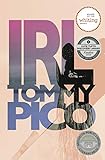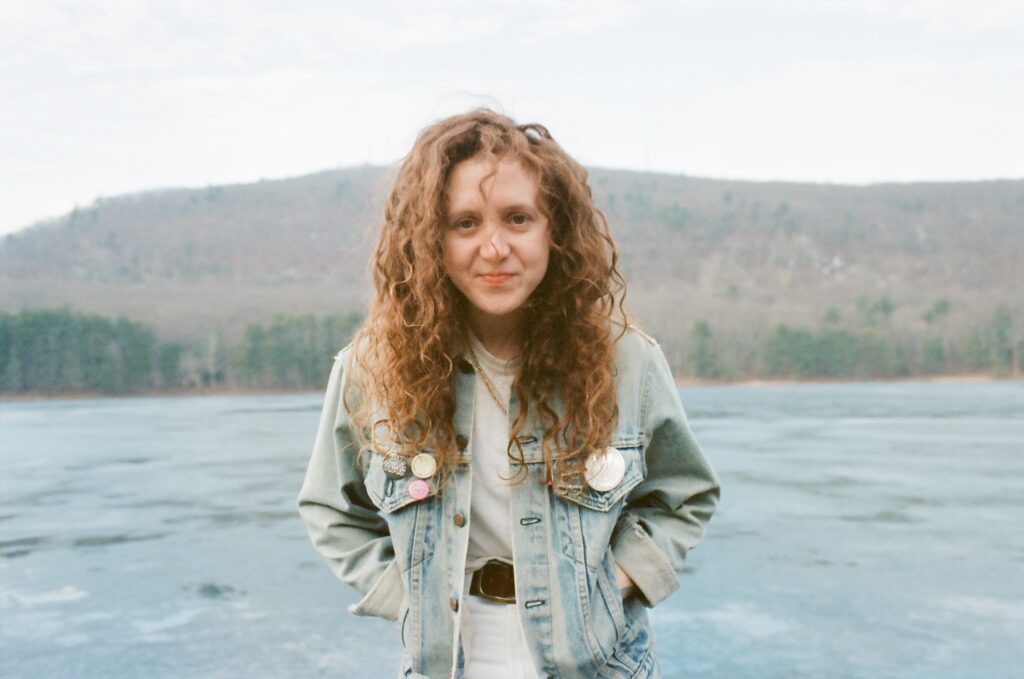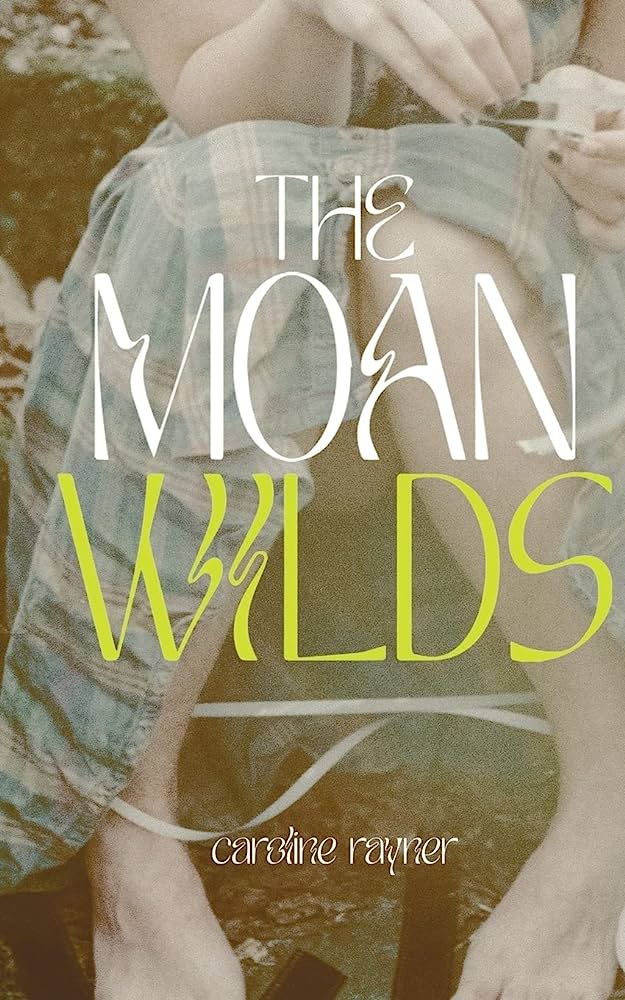The Moan Wilds, Caroline Rayner’s full-length debut, is a book-length poem that reads like a road trip—or like an escape into the woods after ruining your own pool party, or like the “A Thousand Miles” music video except it’s in a minor key. Technicolor, recursive, and hypnotically maximalist, the poem is most of all an adventure into the life-giving and destructive powers of desire. “Fucking awesome,” according to the poet’s former teacher Ocean Vuong, the book leans deep into the American Southern epic tradition of the late C.D. Wright, but finds its own groove in the rich sensory detail of Rayner’s contemporary and millennial moment.
Rayner is a poet, music writer, and teacher from Richmond, Virginia. She earned her MFA in poetry at UMass Amherst, where she taught composition and creative writing. Prior to The Moan Wilds, Rayner’s poems appeared in Annulet, Black Warrior Review, b l u s h, KEITH LLC, Peach Mag, and elsewhere, as well as in the chapbook calorie world (Sad Spell Press, 2017).
Throughout the month leading up to the book’s release, Rayner and I spoke about the poets who changed everything for her, desire so totalizing its expression is book-length, teaching what you can’t do, publishing with friends, and more.
*
Rachelle Toarmino: You wrote The Moan Wilds in your third year of the MFA at UMass Amherst. When did you realize it would become a book-length project? When did the poem find its form?

 Caroline Rayner: In 2016 I saw Tommy Pico read from IRL. It was my second year in the MFA, and I just didn’t know you could write book-length poems like that, that it was a form that was available to me. Hearing him read was exciting, and it sort of changed everything. I wanted to do something similarly energized and unstoppable. Around that same time I read The Pulp vs. The Throne by Carrie Lorig, and whereas IRL reads like something moving unstoppably forward, I experienced The Pulp vs. The Throne as moving unstoppably outward—maximal, uncontainable, insistent. I realized I was writing a long poem sometime during the summer before my last year of the MFA. Or maybe I didn’t realize so much as I decided and challenged myself. I thought that drafting a book-length poem in my final year would be insane, which made me want to do it even more.
Caroline Rayner: In 2016 I saw Tommy Pico read from IRL. It was my second year in the MFA, and I just didn’t know you could write book-length poems like that, that it was a form that was available to me. Hearing him read was exciting, and it sort of changed everything. I wanted to do something similarly energized and unstoppable. Around that same time I read The Pulp vs. The Throne by Carrie Lorig, and whereas IRL reads like something moving unstoppably forward, I experienced The Pulp vs. The Throne as moving unstoppably outward—maximal, uncontainable, insistent. I realized I was writing a long poem sometime during the summer before my last year of the MFA. Or maybe I didn’t realize so much as I decided and challenged myself. I thought that drafting a book-length poem in my final year would be insane, which made me want to do it even more.
RT: Someone else who is obviously in the background of this work is C.D. Wright. A few years ago I asked you whether there was a poet in your life who you felt you were always measuring your own work against, and you said Wright, which came as no surprise. She’s all over The Moan Wilds—from the epigraph and the form to the rich imagery and address, baby. What was your first experience of Wright? What was it about her work that lit you up?
 CR: Deepstep Come Shining was my first encounter with C.D. Wright, which I read in 2017. That summer, I wrote in my journal, “I don’t know how I made it this long without reading C.D. Wright. She just GETS IT.” The energy felt haunted and ungraspable as well as familiar—a combination that was really seductive to me. It’s not quite breathlessness—Deepstep, to me, doesn’t move quickly—but it also doesn’t bog you down. It’s movement, and ritual, and being on the edges. It’s erotic. Also, these wild, singular images that speak to a whole weird world—everything is charged, but also inviting. I want to hang out in Deepstep forever. Another note from my journal: “It’s otherworldly yet hypergrounded.” Something C.D. does brilliantly, which I’m forever trying to imitate, is creating realms of new feeling out of shit that’s deceptively familiar. Deepstep was also the first piece of Southern writing that made me want to think more intentionally about how being from the South shows up in my own work—mood, sound, kinds of heat and light, turns of phrase. C.D. got me to see it all as extremely activating.
CR: Deepstep Come Shining was my first encounter with C.D. Wright, which I read in 2017. That summer, I wrote in my journal, “I don’t know how I made it this long without reading C.D. Wright. She just GETS IT.” The energy felt haunted and ungraspable as well as familiar—a combination that was really seductive to me. It’s not quite breathlessness—Deepstep, to me, doesn’t move quickly—but it also doesn’t bog you down. It’s movement, and ritual, and being on the edges. It’s erotic. Also, these wild, singular images that speak to a whole weird world—everything is charged, but also inviting. I want to hang out in Deepstep forever. Another note from my journal: “It’s otherworldly yet hypergrounded.” Something C.D. does brilliantly, which I’m forever trying to imitate, is creating realms of new feeling out of shit that’s deceptively familiar. Deepstep was also the first piece of Southern writing that made me want to think more intentionally about how being from the South shows up in my own work—mood, sound, kinds of heat and light, turns of phrase. C.D. got me to see it all as extremely activating.
Rachelle: I notice something similar happening with the way you play with pace and time in The Moan Wilds. Can you talk about the poem’s relationship to time?
CR: There’s this interview with C.D. in the American Poetry Review from 2013 where she discusses storytelling and being from the South, and she says, “I just never knew how to tell a proper story. So I both deliberately subvert the story, and involuntarily subvert the story. When I tell Forrest [Gander, her partner of 30 years] my dreams, he walks out of the room. He complains that I ‘tell it in real time.'” To me, that kind of time—real time—is the only time. It’s not about getting anything done, it’s about experiencing it, feeling it. I want to take time back not because I want to possess it, but because I care about activating it, which is an invitation to be in it with me. I want you to know every sensual detail because then we can be in it, this real fucking time, together.
Rachelle: That speaks to the vividness of the images, too. One of the reasons I find The Moan Wilds so close to Deepstep is because of its explicit focus on sight, as experienced through light. In the poem’s killer line—“Bend me into the light”—light is something the speaker wants to be both bent into and bound to others by. Can you talk about the poem’s interest in light?
CR: Light is my way of saying, come on, get in the car, I want to take you somewhere and show you something. It’s a way to direct the reader’s attention. Light also just does everything, makes everything possible. It becomes an object of desire in the book—this desire to know light and to be known by it. And because it’s impossible to know it, and to control it—in terms of like, day and night, the Sun and Moon—it’s erotic.

RT: Speaking of the Moon, you also teach the workshop “Writing the Moon” where poets learn to use the lunar stages to their benefit in their writing—waxing is for gathering, waning is for advising, etc. What kind of processes are in the background of The Moan Wilds? How did you generate or refine the material in the book?
CR: Honestly, my processes are chaotic. I wish I could work in a way that’s as organized and contained as the process I teach in Moon Class. Maybe the reason I teach it is because I don’t know how to do it myself. My process involves a lot of gathering and note-taking from what’s going on during the day, books I’m reading, movies I’m watching, music. It’s messy.
RT: So teaching is a way for you to trick yourself into learning a new technique? How else does your teaching practice inform how you write?
CR: I’m interested in working from the edges of what we know and playing with what feels unfamiliar or impossible. Doing what you know, and then going past that into whatever void—keeping your writing fresh and new. I tried to do that as I wrote The Moan Wilds. It excites me when it feels like I don’t know what I’m doing. Also, teaching breaks me open. I think it has to. It shakes me out of all the usual moves I make in writing, all the usual direction of my thinking, but then reminds me that it’s not about me. Writing is social, and the classroom is a social space. It’s where I remember, share, and insist upon the idea that gathering makes writing possible—like Fred Moten says, “Gathering makes a grammar all its own.”
RT: Let’s talk about the release. The publisher of The Moan Wilds is Shabby Doll House, the journal-turned-press run by your good friend Lucy K Shaw. Emma Ensley, another good friend, did the cover art, and you have plans to tour this summer to visit and read with many other friends. You’ve told me that you want the release of this book to feel like a party, and that you’re trying to involve as many friends as possible. Can you talk about this intention? How do you see that impulse toward friendship relating to your poetry?
 CR: I’m overwhelmed just thinking about poetry and friendship—in a good way. Poetry has made nearly all of my friendships possible, and it’s so wild to meet through poetry, this zone that’s made of language but also goes beyond language. Being there together shakes something loose in me. I’m also thinking of C.D. again and one of my favorite parts of Cooling Time:
CR: I’m overwhelmed just thinking about poetry and friendship—in a good way. Poetry has made nearly all of my friendships possible, and it’s so wild to meet through poetry, this zone that’s made of language but also goes beyond language. Being there together shakes something loose in me. I’m also thinking of C.D. again and one of my favorite parts of Cooling Time:
I like to sit around with people I like and people about whom I haven’t made up my mind yet—drinking wine and eating a crazy salad with our meat, talking straight poetry. On those moonless nights it does not matter if anything is written down or not. The words burn into our brains.
Everything about my thinking and writing is better—more complicated, generous, daring—because of my friends. They are with me all the time, which means they come into whatever I’m writing. And I’m grateful for that. I’m changed by it. I wrote into that feeling of raucous love in The Moan Wilds. It’s a party poem as well as a crush poem. The long poem as a form allows that: the letting in of all these other voices. It’s a whole social situation the whole time. I want the poem to read like one of those hours-long phone calls—storming around, screaming into the phone, starting to hang up then saying wait, one more thing. Hours later you’re still screaming, still laughing, still on the phone. You’ve gotten everywhere and nowhere.









